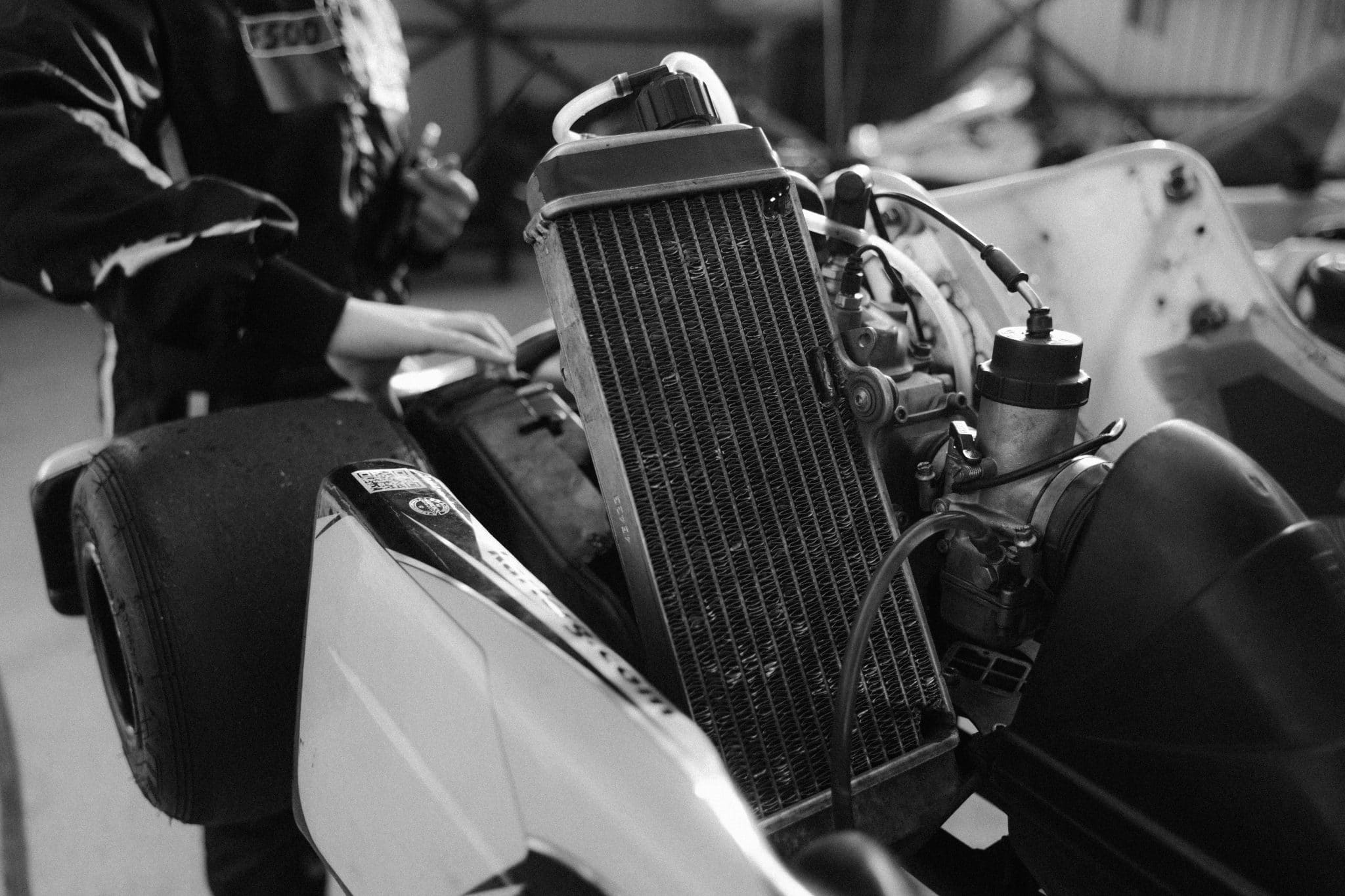Getting paint on your vinyl floor can feel frustrating. You want to remove those stubborn stains without damaging your beautiful flooring.
Many homeowners encounter this common issue when painting walls or undertaking home projects. The good news is that removing paint from vinyl floors is easier than you think.
You don’t need expensive products or professional help. With the right approach and basic household items, you can restore your floor to its original condition.
This guide will show you proven methods for safely removing both wet and dried paint from vinyl flooring, using simple techniques that protect your investment.
Why Paint Sticks to Vinyl Floors?
Vinyl floors are popular because they resist water and stains. However, paint can still stick to the surface, especially if it dries completely.
The key to successful paint removal is acting quickly and using the right materials. Different types of paint require different removal methods.
Latex paint is generally easier to remove than oil-based paint. The sooner you treat the spill, the better your results will be.
Simple Steps to Clean Paint Off Your Vinyl Floor
Follow this tested method to safely remove paint stains without damaging your vinyl flooring.
Tools and Materials Needed
| Item | Purpose | Where to Find |
|---|---|---|
| White vinegar | Natural paint softener | Grocery store |
| Rubbing alcohol | Paint dissolving agent | Pharmacy |
| Dish soap (Palmolive) | Cleaning and lubrication | Kitchen supplies |
| Paper towels | Absorption and cleaning | Household supplies |
| Scotch-Brite (non-scratch) | Gentle scrubbing | Hardware store |
| Putty knife | Scraping dried paint | Tool section |
| Warm water | Rinsing and dilution | Tap water |
| Clean cloth | Final cleaning | Household linens |
Step 1: Prepare the Cleaning Solution

Start by gathering your materials and preparing the work area. You’ll want to work on small sections at a time to prevent the cleaning solution from drying out.
Remove any furniture or obstacles from the painted area to ensure you have plenty of room to work.
Mix equal parts white vinegar and warm water in a small bowl. This natural solution helps soften the paint without harsh chemicals.
For stubborn stains, you can use straight vinegar. The acid in vinegar breaks down paint bonds safely.
Instructions:
- Clear the area around the paint stain
- Mix vinegar and water in equal parts
- Test the solution on a hidden area first
- Ensure good ventilation in the room
Materials needed in this step: White vinegar, warm water, mixing bowl
Step 2: Apply and Let the Solution Work

Pour a small amount of your vinegar solution directly onto the paint stain. Don’t flood the area, just enough to cover the paint thoroughly.
Allow the solution to sit for approximately 5-10 minutes. This waiting time allows the vinegar to penetrate and soften the paint, making removal much easier.
For dried paint, you may need to apply the solution multiple times to achieve the desired effect. Be patient and let each application complete its work before proceeding to the next step.
The paint should start to bubble or lift slightly when it’s ready for removal.
Instructions:
- Apply solution directly to paint stain
- Let it sit for 5-10 minutes without disturbing
- Look for signs of paint softening
- Reapply if the paint appears very thick
Materials needed in this step: Vinegar solution, patience
Step 3: Gently Scrape and Scrub

Now comes the removal process. Use your putty knife at a shallow angle to gently scrape away the softened paint.
Work slowly and avoid pressing too hard to prevent scratching the vinyl surface. Most of the paint should come off easily if it is properly softened.
After scraping, use the non-scratch Scotch-Brite pad with a bit of dish soap to remove any remaining paint residue.
Work in circular motions with light pressure. The soap helps lubricate the surface, preventing scratches.
Instructions:
- Scrape at a shallow angle to avoid damage
- Use light, consistent pressure
- Work from outside edges toward the center
- Clean the scrubbing pad frequently during use
Materials needed in this step: Putty knife, Scotch-Brite pad, dish soap
Step 4: Final Cleaning and Inspection

Once you’ve removed all visible paint, clean the entire area with rubbing alcohol on a clean cloth. This removes any soap residue, ensuring the surface is completely clean.
The alcohol also helps remove any remaining paint particles you might have missed. Rinse the area with clean water and dry thoroughly with paper towels.
Inspect your work under good lighting to ensure all paint is removed. If you notice any remaining spots, repeat the process on those specific areas.
Instructions:
- Wipe the entire area with an alcohol-dampened cloth
- Rinse with clean water to remove all residue
- Dry thoroughly with paper towels
- Inspect under bright light for missed spots
Materials needed in this step: Rubbing alcohol, a clean cloth, paper towels, water
Video Tutorial
Special thanks to In & around the house for providing valuable insights in their video, which I referenced while creating this guide.
Alternative Methods for Stubborn Paint

When standard cleaning doesn’t work, these advanced techniques tackle the toughest paint stains.
1. Heat Method for Thick Paint Layers
When paint has built up in thick layers, heat can help soften it, making removal easier. Use a hair dryer on low heat setting to warm the paint for 30-60 seconds.
Keep the dryer moving to avoid overheating any one spot. Once warmed, the paint should scrape away more easily with your putty knife.
Be careful not to overheat the vinyl, as this can cause damage or discoloration. Test this method in an inconspicuous area first. Work in small sections and allow each area to cool before proceeding to the next one.
2. Commercial Paint Removers
For oil-based paints or stubborn stains, you may need a commercial paint remover specifically designed for vinyl surfaces. Look for products specifically labeled as safe for vinyl flooring.
Always follow the manufacturer’s instructions exactly and ensure proper ventilation. Apply the remover according to directions and allow the recommended working time.
Most commercial removers work faster than household solutions but require more careful handling and disposal.
3. Ice Method for Fresh Spills
If you catch paint while it’s still wet, ice can help harden it, making removal easier. Place ice cubes in a plastic bag and hold it against the paint for several minutes.
The cold temperature will make the paint brittle and easier to scrape off in chunks. This method works best on latex paint and should be your first approach for fresh spills.
Once you’ve removed the bulk of the paint with ice, follow up with the vinegar method for a thorough clean.
4. Plastic Scraper Technique
Sometimes, a putty knife can be too aggressive for your vinyl floor. Try using a plastic scraper or even an old credit card instead.
These tools are gentler on the surface while still providing enough force to remove softened paint. Work slowly with plastic tools, as they’re less effective than metal ones.
You may need to repeat the softening process more frequently, but you’ll have a lower risk of damaging your floor.
5. Steam Cleaning Approach
A steam cleaner can help soften paint while sanitizing the area. Use the steam to heat the paint, then immediately scrape while it’s hot and soft.
This method works well for larger areas with multiple paint spots. Rent or buy a small handheld steam cleaner for this job.
The combination of heat and moisture makes paint removal easier, while also killing any bacteria or mold that may be present.
6. Mayonnaise Treatment
Mayonnaise can help remove paint stains. The oils in mayonnaise penetrate paint and help break it down. Apply a thick layer over the paint and let it sit for several hours or overnight.
After the treatment time, scrape away the mayonnaise and paint together. This method works slowly but is very gentle on your vinyl flooring.
Clean the area thoroughly afterward to remove all oily residue.
What to Avoid When Removing Paint
Avoid these common mistakes that can permanently damage your vinyl flooring during the paint removal process.
| Don’t Do This | Why It’s Harmful | Better Alternative |
|---|---|---|
| Use steel wool or metal scrapers | Scratches the vinyl surface permanently | Non-scratch pads or plastic tools |
| Apply excessive heat | Can warp or discolor vinyl | Low heat for short periods only |
| Use acetone or nail polish remover | Can dissolve vinyl material | Rubbing alcohol or vinegar |
| Scrub with coarse brushes | Leaves permanent scratch marks | Soft cloths or fine pads |
| Let solutions sit too long | May damage floor finish | Follow the recommended timing |
| Use bleach-based cleaners | Can fade or discolor vinyl | Mild soap and water |
Final Notes
Removing paint from vinyl floors doesn’t have to be a stressful experience. With the right materials and techniques, you can restore your floor’s appearance without causing damage.
The key is working patiently and using gentle methods that protect your flooring investment. Begin with the simplest approaches, such as vinegar solutions, before progressing to stronger alternatives.
Remember that fresh paint spills are always easier to clean than dried ones, so act quickly when accidents happen.
By following these proven methods and avoiding harsh chemicals or aggressive scraping, you’ll keep your vinyl floors looking beautiful for years to come.
Take your time and work systematically for the best results.
Need how-tos and hacks? Find more helpful tips and guides here.
Frequently Asked Questions
Will Goo Gone Remove Paint from Vinyl Flooring?
Yes, Goo Gone can safely remove paint from vinyl flooring when used according to the manufacturer’s instructions.
How to Remove Dried Paint from a Laminate Floor?
Use a warm vinegar solution to soften dried paint, then gently scrape with a plastic putty knife.
Will Paint Thinner Damage Vinyl Flooring?
Yes, paint thinner can damage vinyl flooring by dissolving the material and causing discoloration or warping.
Can you Use Goo Gone on Vinyl Flooring?
Yes, Goo Gone is safe for vinyl flooring, but always test in an inconspicuous area first.








